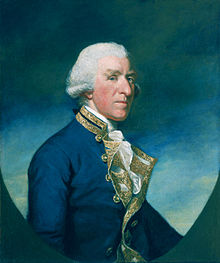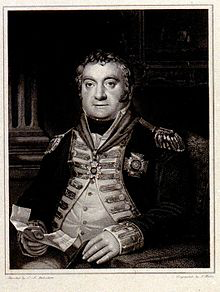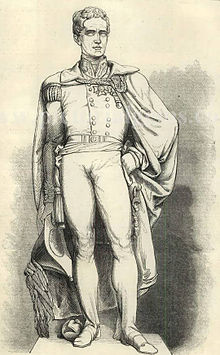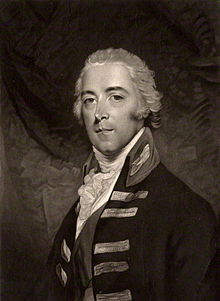Regency Personalities Series
In my attempts to provide us with the details of the Regency, today I continue with one of the many period notables.
Viscount Samuel Hood
12 December 1724 – 27 January 1816

Samuel Hood
Viscount Sir Samuel Hood son of Samuel Hood, vicar of Butleigh in Somerset, and prebendary of Wells and Mary Hoskins, daughter of Richard Hoskins, Esquire, of Beaminster, Dorset. In 1740 Captain (later Admiral) Thomas Smith was stranded in Butleigh when his carriage broke down on the way to Plymouth. The Rev Samuel Hood rescued him and gave him hospitality for the night. Samuel and Alexander were inspired by his stories of the sea and he offered to help them in the Navy. The Rev Samuel Hood and his wife would not allow any more sons to join the Navy as “they might be drowned”. Their third son, Arthur William became Vicar of Butleigh but died of fever in his 30’s. Another son was drowned in the local river Brue as a boy.
Samuel, older brother of Alexander Hood, 1st Viscount Bridport, entered the Royal Navy in 1741. He served part of his time as midshipman with George Brydges Rodney on the Ludlow and became a lieutenant in 1746. He had opportunities to see service in the North Sea during the War of the Austrian Succession.
In 1754, he was made commander of the sloop Jamaica and served on her at the North American station. In July 1756, while still on the North American station, he took command of the sloop HMS Lively.
At the outbreak of the Seven Years’ War in 1756, the navy was rapidly expanded which benefited Hood. Later that year Hood was promoted to Post Captain and given command of HMS Grafton. In 1757, while in temporary command of Antelope (50 guns), he drove a French ship ashore in Audierne Bay, and captured two privateers. His zeal attracted the favourable notice of the Admiralty and he was appointed to a ship of his own, Bideford.
In 1759, when captain of the Vestal (32), he captured the French Bellone (32) after a sharp action. During the war, his services were wholly in the Channel, and he was engaged under Rodney in 1759 in the Raid on Le Havre, destroying the vessels collected by the French to serve as transports in the proposed invasion of Britain.
He was appointed in Commander-in-Chief, North American Station in July 1767. He returned to England in October 1770. In 1778, he accepted a command which in the ordinary course would have terminated his active career, becoming Commissioner of the dockyard at Portsmouth and governor of the Naval Academy.
In 1778, on the occasion of the King’s visit to Portsmouth, Hood was made a baronet.
The war was deeply unpopular with much of the British public and navy. Many admirals had declined to serve under Lord Sandwich, the First Lord of the Admiralty. Admiral Rodney, who then commanded in the West Indies, had complained of a lack of proper support from his subordinates, whom he accused of disaffection. The Admiralty, anxious to secure the services of trustworthy flag officers, promoted Hood to rear-admiral on 26 September 1780, and sent him to the West Indies to act as second in command under Rodney, who knew him personally. He joined Rodney in January 1781 in his flagship Barfleur, and remained in the West Indies or on the coast of North America until the close of the American Revolutionary War.
The expectation that he would work harmoniously with Rodney was not entirely justified. Their correspondence shows that they were not on friendly terms; but Hood always did his duty, and he was so able that no question of removing him from the station ever arose. The unfortunate turn for the British taken by the campaign of 1781 was largely due to Rodney’s neglect of Hood’s advice.
When Rodney decided to return to Britain for the sake of his health in the autumn of 1781, Hood was ordered to take the bulk of the fleet to the North American coast during the hurricane months. Hood joined Admiral Thomas Graves in the unsuccessful effort to relieve the army at Yorktown, when the British fleet was driven off by the French Admiral, the Comte de Grasse, at the Battle of the Chesapeake.
When he returned to the West Indies, he was for a time in independent command owing to Rodney’s absence in England. De Grasse attacked the British islands of St Kitts and Nevis with a force much superior to Hood’s squadron. Hood made an unsuccessful attempt in January 1782 to save them from capture, with 22 ships to 29, and the series of bold movements by which he first turned the French out of their anchorage at Basseterre of St Kitts and then beat off their attacks, were one of the best accomplishments of any British admiral during the war.
On 12 April 1782 Hood took part in a British fleet under Rodney which defeated a combined French and Spanish fleet which was planning an invasion of Jamaica. The French commander De Grasse, who had been responsible for the victory at Chesapeake was captured and taken back to Britain as a prisoner.
Eventually Hood was ordered to chase and with his division of 12 ships he captured 4 ships at the Mona Passage on 19 April 1782 thus completing the defeat. While serving in the Caribbean Hood became acquainted with, and later became a mentor to Horatio Nelson who was a young frigate commander. Hood had been a friend of Nelson’s uncle Maurice Suckling. In 1782 Hood introduced Nelson to the Duke of Clarence, the future King William IV who was then a serving naval officer in New York.
Hood was made an Irish peer as Baron Hood of Catherington in September 1782. During the peace, he entered the British Parliament as Member for Westminster in the election of 1784 where he was a supporter of the government of William Pitt the Younger. In 1786 he became Commander-in-Chief, Portsmouth holding that post until 1789. Promoted to vice-admiral in 1787, he was appointed to the Board of Admiralty under John Pitt, 2nd Earl of Chatham, brother of the Prime Minister, in July 1788. He became Commander-in-Chief, Portsmouth again in June 1792.
Following the outbreak of the French Revolutionary War, Hood became Commander-in-Chief, Mediterranean Fleet in February 1793. In August 1793 French royalists and other opponents of the revolution took over the town and invited Hood, whose fleet was blockading the city, to occupy the town. Hood, without time to request for instructions from the Admiralty in London, moved swiftly to take command of the port.
There were two main reasons for the British move. It was hoped that Toulon could be a centre of French resistance to Paris, and also to take possession of the French Mediterranean fleet of fifty eight warships, which lay in the harbour. It was hoped that depriving the French revolutionaries of their maritime resources would cripple the revolution. He occupied Toulon on the invitation of the French royalists, in co-operation with the Spaniards and Sardinians. In December of the same year, the allies, who did not work harmoniously together, were driven out, mainly by the generalship of Napoleon. Hood ordered the French fleet burned to prevent them falling back into the hands of the revolutionaries.
Hood then turned to the occupation of Corsica, which he had been invited to take in the name of the King of Britain by Pasquale Paoli, who had been leader of the Corsican Republic before it was subjugated by the French a quarter of a century previously. The island was for a short time added to the dominions of George III, chiefly by the exertions of the fleet and the co-operation of Paoli. While the occupation of Corsica was being effected, the French at Toulon had so far recovered that they were able to send a fleet to sea. Nelson was recorded as saying that Hood was “the best Officer, take him altogether, that England has to boast of”.)
In October, he was recalled to England in consequence of some misunderstanding with the admiralty or the ministry, which has never been explained. Richard Freeman, in his book, The Great Edwardian Naval Feud, explains his relief from command in a quote from Lord Esher’s journal. According to this journal, “… [Hood] wrote ‘a very temperate letter’ to the Admiralty in which he complained that he did not have enough ships to defend the Mediterranean.” As a result Hood was then recalled from the Mediterranean.
Samuel Hood was created Viscount Hood of Whitley, Warwickshire in 1796 with a pension of £2000 per year for life (about £300,000 a year in present (2010) terms). In 1796, he was also appointed Governor of the Greenwich Hospital, a position which he held until his death in 1816. He served as Tory Member of Parliament for Westminster from 1784 to 1788 and from 1790 to 1796, and was Member for Reigate between 1789 and 1790.
He died in Greenwich on 27 January 1816 and is buried in Greenwich Hospital Cemetery. A peerage of Great Britain was conferred on his wife, Susannah, as Baroness Hood of Catherington in 1795. Samuel Hood’s titles descended to his youngest son, Henry (1753–1836).
































